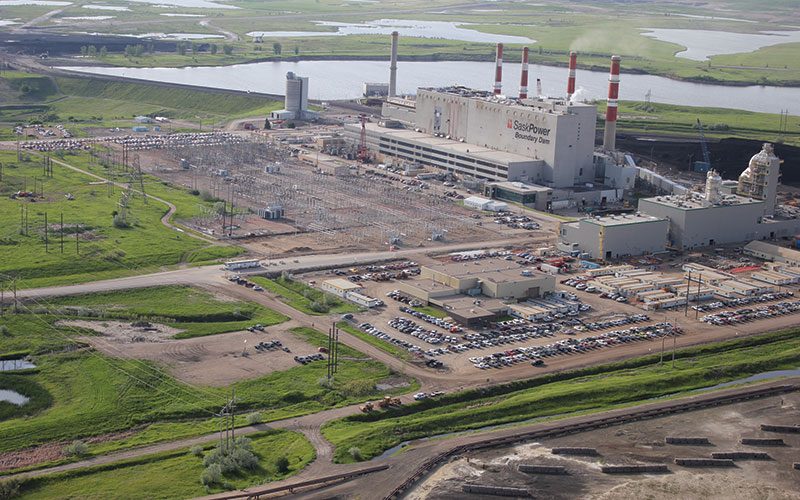The resurgence of coal reality
As global energy dynamics evolve, the debate over coal’s role continues to intensify. Nuanced strategies such as sustainable coal stewardship, collaboration and innovation are key for a sustainable future, says Michelle Manook at FutureCoal

The drumbeat of peak coal may have echoed through boardrooms and media headlines in recent years, but a different story is unfolding on the ground. As concern over energy security surges and geopolitical realities bite, the global energy narrative is shifting. This is not simply a resurgence, but a continuation of a complex reality that is often ignored by those wielding simplistic narratives.
The shift comes as traditional funders remain chained to virtue signalling and one-size-fits-all solutions dictated by trends emanating from the Global North. As energy security concerns pose an immediate threat, this approach seems increasingly detached from the realities of many nations that are now turning back to fossil fuels out of economic and social necessity.
Policy shifts and energy dilemmas
The UK, a staunch advocate of ending coal, has backtracked by reactivating coal plants. Prime Minister Rishi Sunak abandoned the net-zero commitment to ban coal from October 2024, giving the government the flexibility to reactivate coal plants if necessary to prevent blackouts. Reports suggest that Britons pay 75% more for electricity than Americans due to carbon costs on fossil fuels, a surge in the price of gas-fired power, and renewable energy subsidies.
In 2023, Sweden’s authorities ratified an amendment to its energy targets, shifting from a 100% renewable target to a 100% fossil-free target, with nuclear being the new priority.
In Canada, as temperatures plunged to -40°C, the state of Alberta relied on coal power after renewables proved insufficient to meet demand. The country’s plan to phase out unabated coal by 2030 jeopardises Alberta’s ability to meet demand in future winters.

The case for sustainable coal stewardship
The solution that traditional funders are searching for is not the abandoning of coal assets, but the adoption of more nuanced and responsible strategies. FutureCoal’s Sustainable Coal Stewardship (SCS) blueprint offers a roadmap that transcends the outdated binary of ‘good’ and ‘bad’ energy sources. Instead, it showcases the vast commercial opportunities throughout the entire coal value chain.
The SCS model maps out a pathway for optimising efficiency across the global coal value chain. The pathway’s three phases are: Pre-combustion, Combustion and Beyond Combustion. Every step contributes to energy security and the minimisation of environmental impacts. Through innovation and responsible production, we aim to extract maximum value from each tonne of coal and all by-products from its waste.
Shifts in investor sentiment

Non-traditional financiers understand our SCS model because they believe in optimising a nation’s natural resources. China, India, Japan and even small economies such as Botswana attract substantial funding for coal projects, including coal-to-liquid plants, gasification facilities, and hydrogen and synthetic fuel production. These initiatives are designed to ensure energy security, foster economic growth and job creation, and position these nations as industry leaders.
Traditional investors are now starting to realise that the energy transition might not be yielding the promised rewards. Major financial players such as JPMorgan Asset Management and State Street Global Advisors have withdrawn support, while the world’s largest asset manager, BlackRock, has scaled back its involvement with The Climate Action 100+ group. Launched in 2017, Climate100+ aimed to commit asset holders of major corporate greenhouse gas emitters to reduce their emissions. The reduced participation of these investors highlights divisions in the shift away from financing fossil fuels.
The Coal Policy Tracker monitors commitments by major financial institutions worldwide, 84% of which have not committed to exiting thermal coal by 2030 in Europe and the OECD and by 2040 worldwide. BlackRock, renowned for its anti-thermal coal stance in its active funds, acknowledged in December 2023 that, despite renewable growth, meeting global energy demand will rely on traditional energy sources for some time. It believes fossil fuels will continue to outperform during supply-demand imbalances. These shifts in sentiment from traditional funders no longer ignore the coal reality and its diversification.
Embracing collaboration for a sustainable future

Let me be clear: FutureCoal does not advocate for a shift away from renewables to coal. We believe in all fuels and all technologies, supporting each other in times of need. In developing and emerging markets, coal remains indispensable for ensuring reliable, secure and affordable energy access for their populations. The financial sector and governments must recognise that climate goals can be pursued without sacrificing coal assets. Technologies and processes exist to significantly reduce coal combustion emissions, including CO2, by up to 99%.
By embracing a pragmatic approach, harnessing innovation and investing in abatement technologies, the finance and investment community can shape a sustainable energy future that leaves no one behind. This journey from coal-consuming nations demands collaboration from all stakeholders, with traditional funders adapting to the changing landscape and non-traditional investors offering new perspectives.
We must move past simple narratives and embrace the energy transition’s complexities. The future is rarely black and white; neither is the story of coal. Let us ensure the story is one of progress, responsibility and a shared commitment to a sustainable future for all.
By Michelle Manook, CEO of FutureCoal
Image credit | Saskpower






Follow us
Advertise
Free e-Newsletter